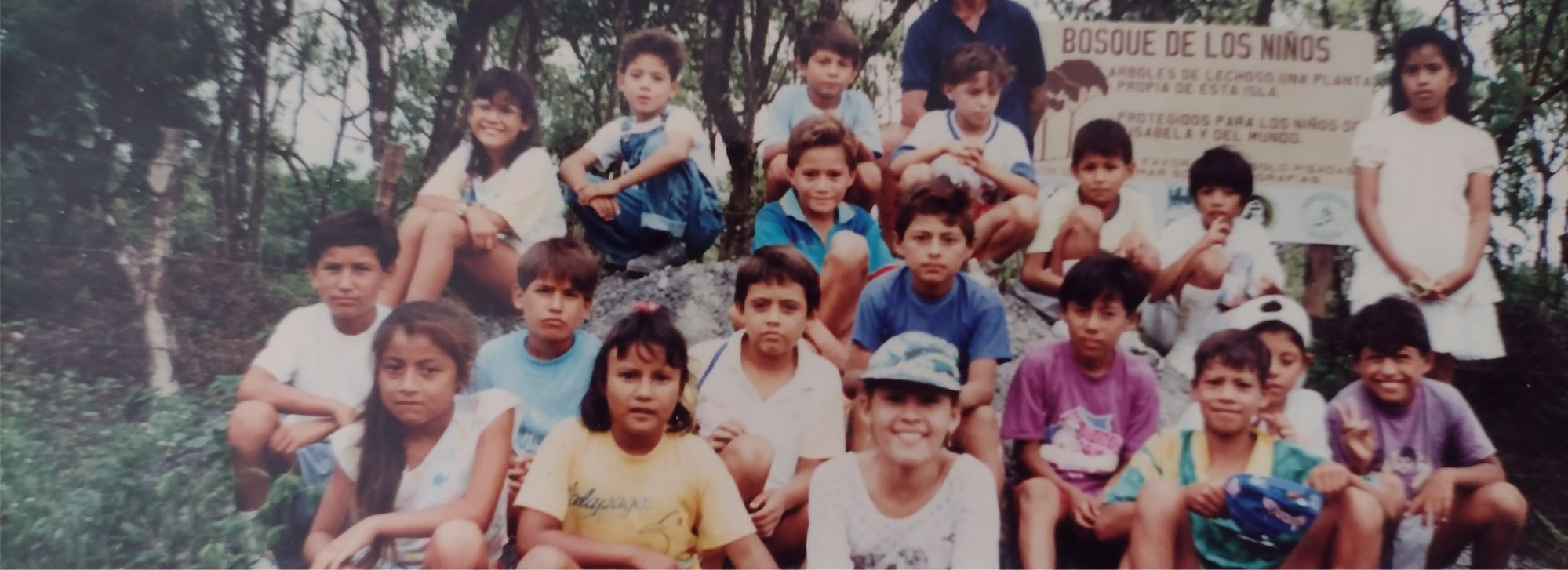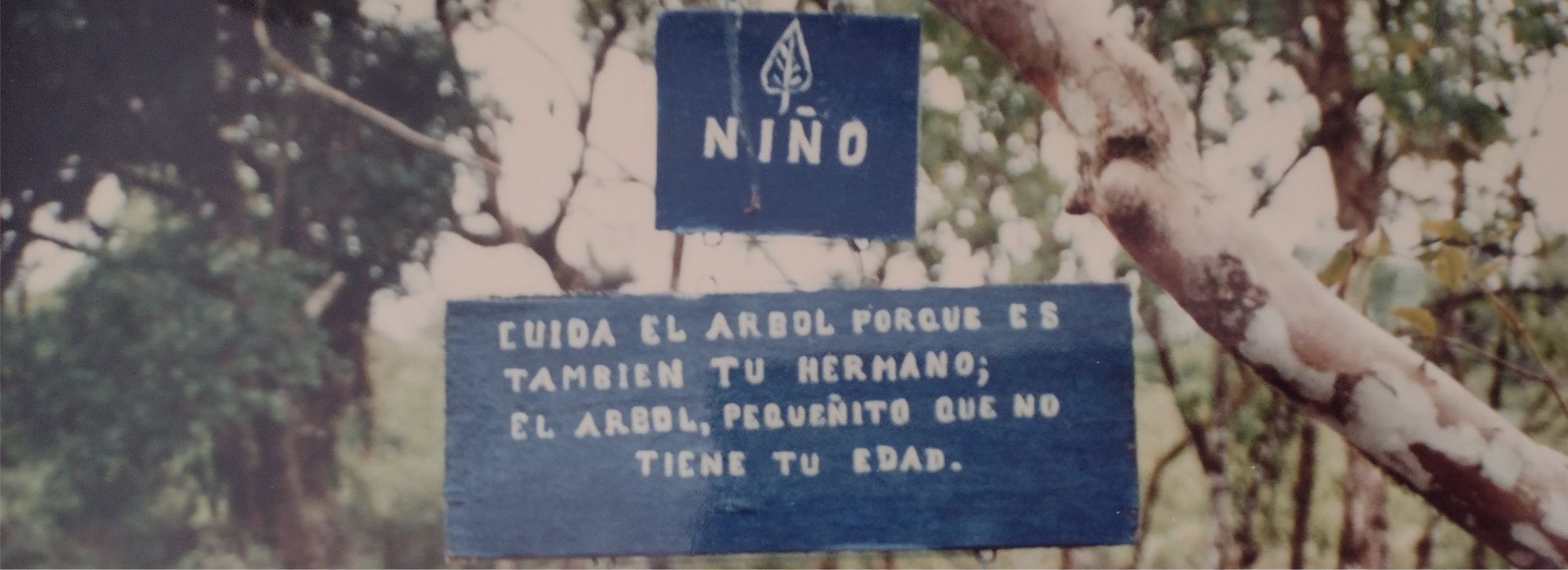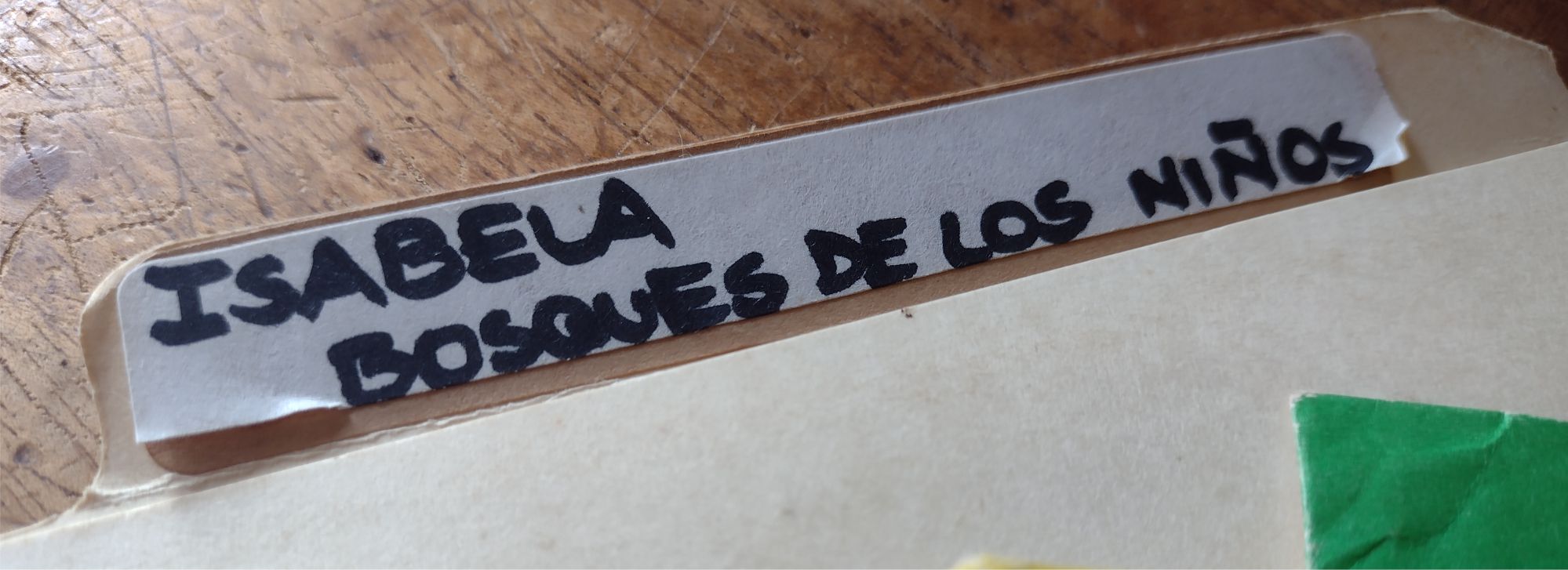Forest of the Children
On Isabela Island, Scalesia cordata, popularly known as "lechoso", grows only in a handful of spots, including the area of the Sierra Negra volcano. The terrible fires (such as the one in 1985, which consumed some 20,000 ha, or the one in 1994, which devastated some 4,000), together with agriculture, cattle grazing, and the introduction of foreign species such as the guava, the grass elephant or the cachimuela, have cornered this unique species. A species, by the way, used since the beginning of the human occupation of the island as a source of wood, as can still be seen in the beams of some old buildings.
The Isabelan Scalesia redoubts are a real treasure. This is how Jacinto Gordillo understood it. Gordillo was a man with a long history in Isabela and, for many years, the CDF representative on the island. Around 1992, Don Jacinto paid attention to a small "lechoso" grove that was located on one side of the road that connects Tomás de Berlanga, the parish seat, with the San Antonio de los Tintos precinct. The trees were threatened, since the land on which they grew was privately owned (by D. Heriberto Gil), it was invaded by guava trees and other weeds, and cattle were tied up on the trees.
The man was not daunted and in August 1992 he wrote to the head of the Botany area of the CDF, Hugo Valdebenito, who recommended the purchase of the property. By September the land was being negotiated, but then the matter fell into oblivion. Gordillo took up the issue again in August 1993, and the director of the Station, Chantal Blanton, managed to formalize the acquisition shortly after. Additionally, she requested the donation of a small piece of land that served as the entrance road to the sanctuary, which was municipal property. The formal owner of the forest ended up being, in a very symbolic way, the Isabela Island's Renacer Club, which made its first visit to the forest on August 27, 1993.
 ↔
↔
Don Jacinto baptized the reserve as "El Bosque de los Niños" ("The Children's Forest"). The protected area was 1,200 m2, fenced with wire and stakes, and free of guava and other invaders thanks to the application of the infamous Roundup insecticide (glyphosate, still popular at the time). At the beginning, the forest had 168 specimens of Scalesia and other endemic species such as guayabillo and pega-pega.
In December 1994, a big wooden sign sent from the Darwin Station in Santa Cruz was installed. Explanatory small signs and a rain gauge were placed on the internal trails, and in March 1995 "bands" were created to grow new Scalesia plants.

The grove was visited by members of the European Commission in July 1994, and by Henri de Nassau-Wellburg, Grand Duke of Luxembourg, in November 1995.
How do we know all this? Because Jacinto Gordillo produced a series of reports, typed, illustrated with photos glued to the paper, cut out and stapled, and written with his personal prose and all his (many and strong) opinions about the conservation of the islands' environment. Those reports are one of the jewels of the CDF Archive. About this project, "The Children's Forest", he left numerous writings, letters, and petitions...
...and a good number of photographs: the trees, the children next to them, the posters, the landscapes... Reading his paragraphs, it is impossible to ignore the idea underlying his words: these islands, this world, are the legacy that we leave to those children that appear in the photos. And to everyone else.
Gordillo, Jacinto. [El Bosque de los Niños]. [Report]. Isabela, Galapagos : Jacinto Gordillo, [ca1995]. [N.d.] : col. ill. : 29 cm. DDC 333.72. Regularly preserved.
Subject categories: Botany | Conservation | Ecology | Environmental education | Flora | Galapagos biodiversity | History of CDF | History of Galapagos
Keywords: Environmental protection | Manuscripts | Memory | Photos | Protected areas | Reports | Social organizations | Social participation
Time framework: 1995
Text & picture: Edgardo Civallero (edgardo.civallero@fcdarwin.org.ec).
Publication date: 1 October 2022
Last update: 1 October 2022
